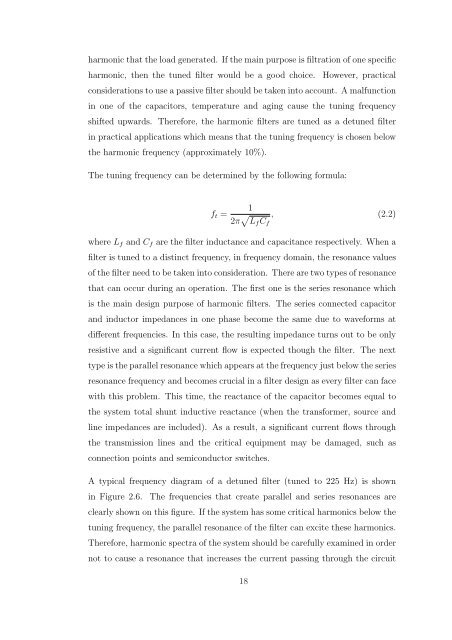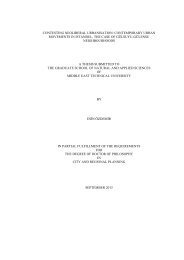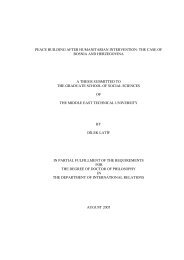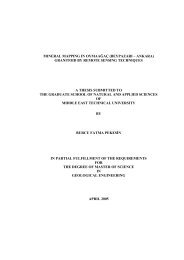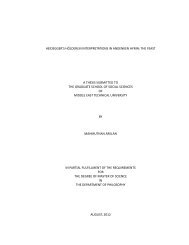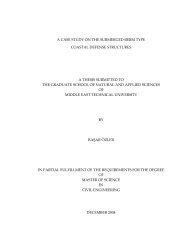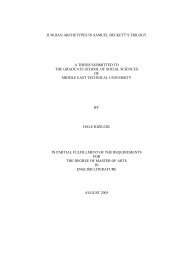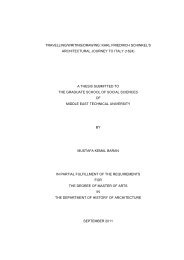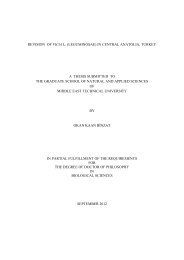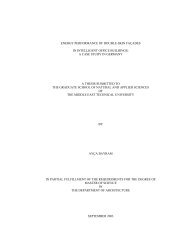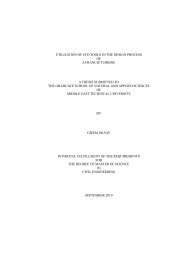design and implementation of thyristor switched shunt capacitors a ...
design and implementation of thyristor switched shunt capacitors a ...
design and implementation of thyristor switched shunt capacitors a ...
Create successful ePaper yourself
Turn your PDF publications into a flip-book with our unique Google optimized e-Paper software.
harmonic that the load generated. If the main purpose is filtration <strong>of</strong> one specific<br />
harmonic, then the tuned filter would be a good choice. However, practical<br />
considerations to use a passive filter should be taken into account. A malfunction<br />
in one <strong>of</strong> the <strong>capacitors</strong>, temperature <strong>and</strong> aging cause the tuning frequency<br />
shifted upwards. Therefore, the harmonic filters are tuned as a detuned filter<br />
in practical applications which means that the tuning frequency is chosen below<br />
the harmonic frequency (approximately 10%).<br />
The tuning frequency can be determined by the following formula:<br />
f t =<br />
1<br />
2π √ L f C f<br />
, (2.2)<br />
where L f <strong>and</strong> C f are the filter inductance <strong>and</strong> capacitance respectively. When a<br />
filter is tuned to a distinct frequency, in frequency domain, the resonance values<br />
<strong>of</strong> the filter need to be taken into consideration. There are two types <strong>of</strong> resonance<br />
that can occur during an operation. The first one is the series resonance which<br />
is the main <strong>design</strong> purpose <strong>of</strong> harmonic filters. The series connected capacitor<br />
<strong>and</strong> inductor impedances in one phase become the same due to waveforms at<br />
different frequencies. In this case, the resulting impedance turns out to be only<br />
resistive <strong>and</strong> a significant current flow is expected though the filter. The next<br />
type is the parallel resonance which appears at the frequency just below the series<br />
resonance frequency <strong>and</strong> becomes crucial in a filter <strong>design</strong> as every filter can face<br />
with this problem. This time, the reactance <strong>of</strong> the capacitor becomes equal to<br />
the system total <strong>shunt</strong> inductive reactance (when the transformer, source <strong>and</strong><br />
line impedances are included). As a result, a significant current flows through<br />
the transmission lines <strong>and</strong> the critical equipment may be damaged, such as<br />
connection points <strong>and</strong> semiconductor switches.<br />
A typical frequency diagram <strong>of</strong> a detuned filter (tuned to 225 Hz) is shown<br />
in Figure 2.6.<br />
The frequencies that create parallel <strong>and</strong> series resonances are<br />
clearly shown on this figure. If the system has some critical harmonics below the<br />
tuning frequency, the parallel resonance <strong>of</strong> the filter can excite these harmonics.<br />
Therefore, harmonic spectra <strong>of</strong> the system should be carefully examined in order<br />
not to cause a resonance that increases the current passing through the circuit<br />
18


